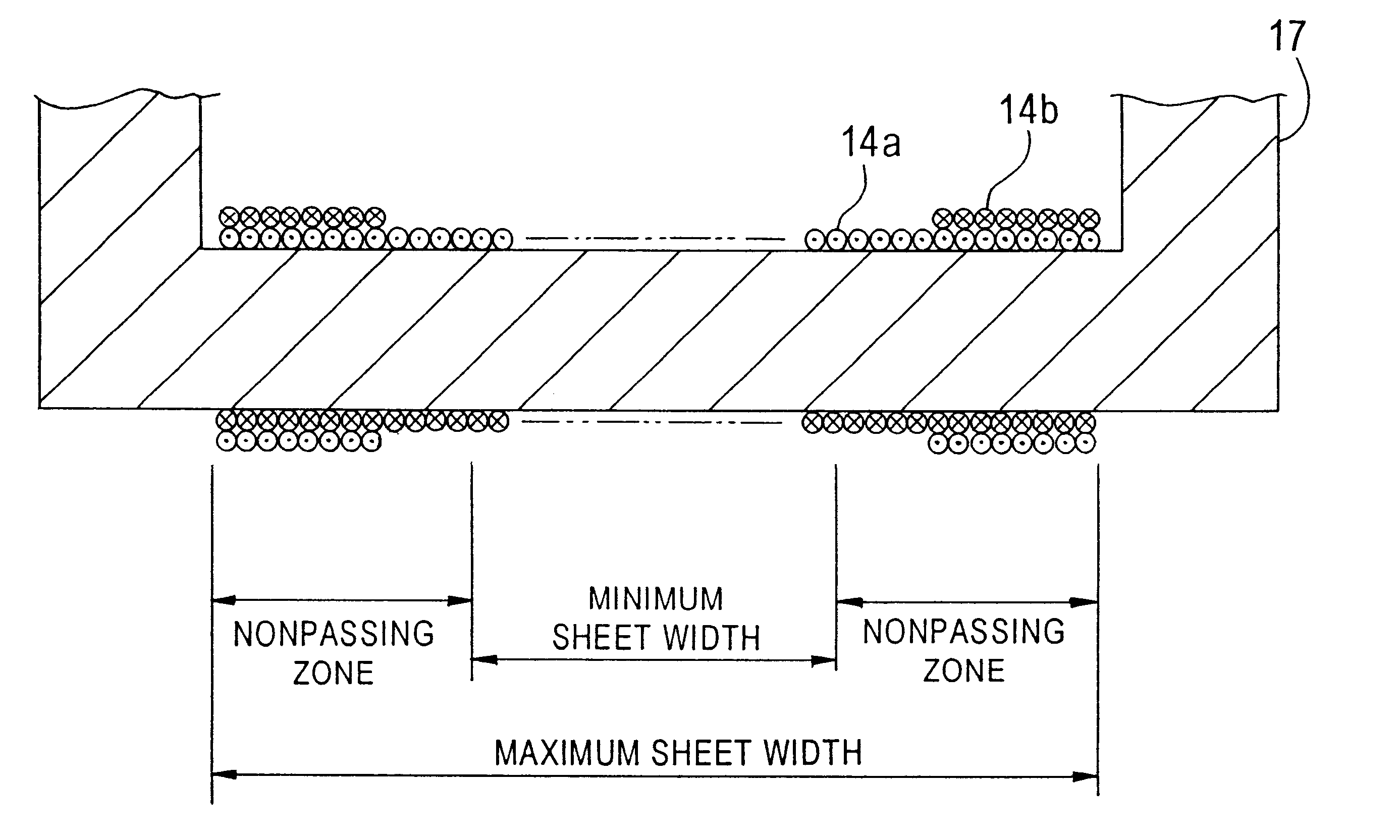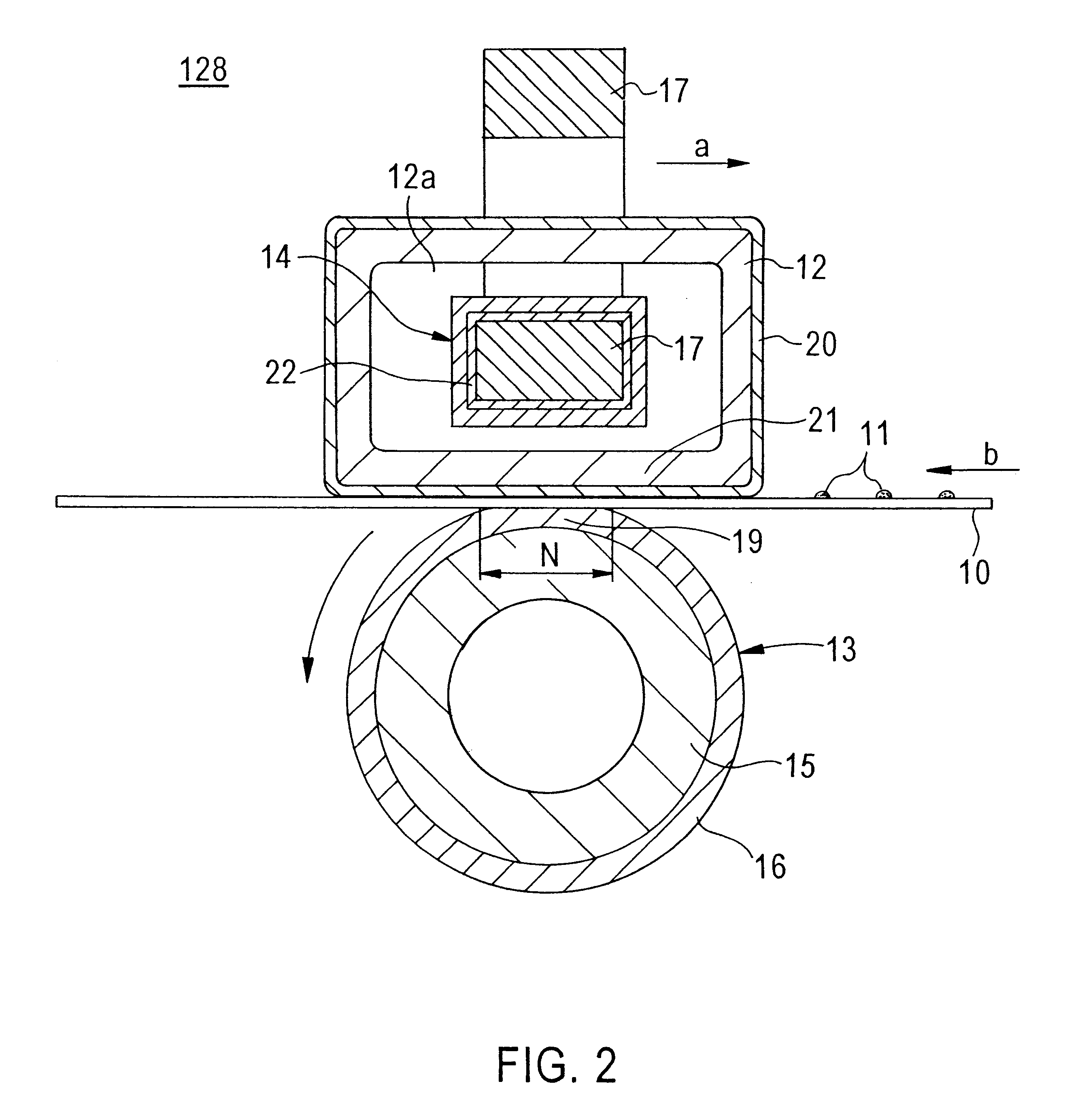Induction-heating fusion device
a fusion device and induction heating technology, applied in the field of fusion devices, can solve the problems of increasing the size of the device, inability to maintain the fusion temperature,
- Summary
- Abstract
- Description
- Claims
- Application Information
AI Technical Summary
Benefits of technology
Problems solved by technology
Method used
Image
Examples
embodiment 1
FIG. 1 is a schematic view illustrating a copying machine 100 as an image forming apparatus incorporating an induction-heating fusion device according to the present invention.
As shown, the copying machine 100 includes an image scanner section 101 for scanning an original document, a signal processing section 102 for processing signals, a printer section 103 for outputting to a sheet 10 as a recording medium the print of an image equivalent to the image of the original document resulting from the scanning at the image scanner section 101, and a casing 104 in which these sections are disposed or accommodated.
In the image scanner section 101, the original document placed on a platen glass 105 is pressed by a platen cover 106 which may be replaced with an automatic original document feeder not shown, as the case maybe. The original document on the platen glass 105 is illuminated by a lamp 107, and light reflected by the original document forms an image on a CCD line image sensor 110 th...
embodiment 2
is an arrangement adapted to prevent a temperature decrease in the opposite end portions as seen from the curve (c) by exciting the second induction coil 14b in the same direction as the excited direction of the first induction coil 14a, so that even a sheet of size 1 can be subjected to a temperature ensuring the satisfactory fusion intensity level over the entire width thereof.
Further, as seen from the curve (b), EMBODIMENT 2 is capable of inhibiting an excessive temperature rise in the sheet-nonpassing zone defined in the opposite end portions when a sheet of size 2 is passed by failing to apply current to the second induction coil 14b, because the coil length is shorter than that in the conventional art.
Still further, as seen from the curve (d), EMBODIMENT 2 is capable of minimizing a temperature rise in the opposite end portions including a larger sheet-nonpassing zone defined when a smaller-size sheet, or sheet of size 3 is passed by exciting the second induction coil 14b in a...
embodiment 3
EMBODIMENT 3 further includes a third induction coil (induction sub-coil) . It should be noted that this embodiment is common to EMBODIMENT 1 described above in the overall construction of the copying machine as the image-forming apparatus, that of the fusion device and the like and, hence, the description of such common constructions and features are omitted.
FIG. 8 is a fragmentary sectional view illustrating a coil section according to EMBODIMENT 3.
As shown, this embodiment includes first induction coil 14a having a coil length equal to the maximum sheet width and wound around core 17, second induction coil 14b wound in a direction opposite to the winding direction of the first induction coil 14a and provided in the opposite end portions only, and third induction coil 14c wound in the same direction as the winding direction of the first induction coil 14a and provided only in endmost parts of the opposite end portions.
FIG. 9 illustrates a circuit for supplying power to these coils...
PUM
 Login to View More
Login to View More Abstract
Description
Claims
Application Information
 Login to View More
Login to View More - R&D
- Intellectual Property
- Life Sciences
- Materials
- Tech Scout
- Unparalleled Data Quality
- Higher Quality Content
- 60% Fewer Hallucinations
Browse by: Latest US Patents, China's latest patents, Technical Efficacy Thesaurus, Application Domain, Technology Topic, Popular Technical Reports.
© 2025 PatSnap. All rights reserved.Legal|Privacy policy|Modern Slavery Act Transparency Statement|Sitemap|About US| Contact US: help@patsnap.com



